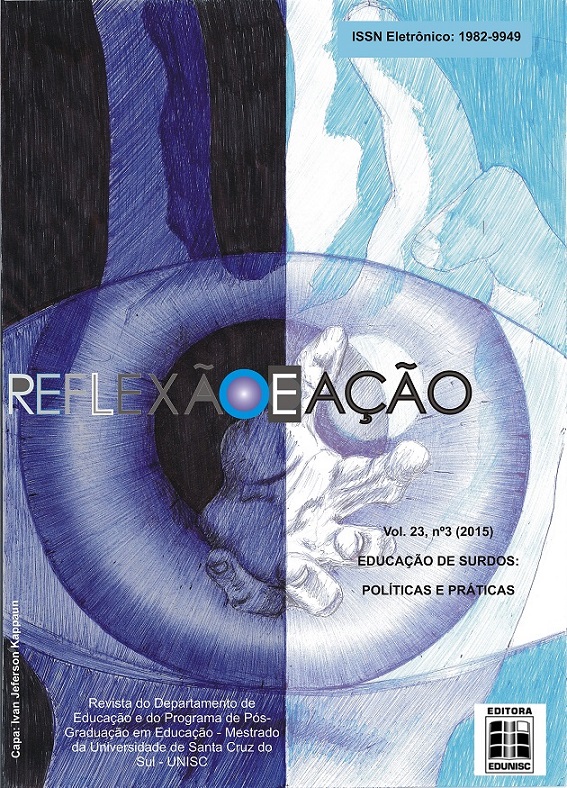MAPEANDO CURRÍCULOS PARA LA EDUCACIÓN DE SORDOS: CONOCIMIENTOS Y PRÁCTICAS DOCENTES
DOI:
https://doi.org/10.17058/rea.v23i3.6047Palabras clave:
Educación para sordos, Plan de estudios, Cartografía, DiscapacidadResumen
Este texto fue construido a partir de la descripción de algunos planes de estudio producido más reuniones de formación de profesores y administradores en la escuela para sordos en la enseñanza municipal de Porto Alegre. Con pedagógica propuesta de Atelier, reuniones de capacitación producen movimientos entre los profesores, tanto en la discusión sobre el aprendizaje de los estudiantes sordos, con o sin discapacidad. Se propuso tareas, experimentos, debates, opiniones que dicen diferentes momentos multiconexión de transinteração, la cultura visual. Los talleres sirvieron para afirmásemos unos visuales diferencias culturales entre bilingüe, con el pleno derecho de la defensa a la escuela y sus ensinagens por todos los estudiantes sordos. La secuencia de comandos que presentamos aquí es el resultado de los análisis de las reuniones de formación del profesorado y el juicio se reanuda, estos materiales forman parte de las actividades de investigación "Mapeo de la educación de los alumnos sordos con discapacidad: de aprendizaje diferente y conocimientos diferentes", coordinado por profesores Daniele Noal Gai y Liliane Ferrari Giordani y de investigación "Procesos de Construcción y Desarrollo Curricular para Sordos con discapacidad en una escuela bilingüe para sordos", desarrollado por el estudiante graduado Cassia Lobato Marins. A lo largo de este texto nos dedicamos a pensar en los edificios colectivos para el aprendizaje curricular en una escuela que proponen bilingüe ya que describen acciones que afirman la educación y el aprendizaje de los alumnos sordos con discapacidades promovidas en medio de una cultura visual.Descargas
##submission.downloads##
Publicado
Cómo citar
Número
Sección
Licencia
El envío de originales a este periódico implica la transferencia, por parte de los(las) autores/as, de los derechos de publicación impresa y digital. Los derechos de autor para los artículos publicados son del(la) autor/a, con derechos del periódico sobre la primera publicación. Los(las) autores/as solo podrán utilizar los mismos resultados en otras publicaciones indicando claramente este periódico como medio de publicación original. En virtud de ser un periódico de acceso abierto, se permite el uso gratuito de los artículos en aplicaciones educacionales y científicas siempre y cuando se cite la fuente conforme la licencia CC-BY de Creative Commons.
 Creative Commons Atribuição 4.0 Internacional.
Creative Commons Atribuição 4.0 Internacional.


